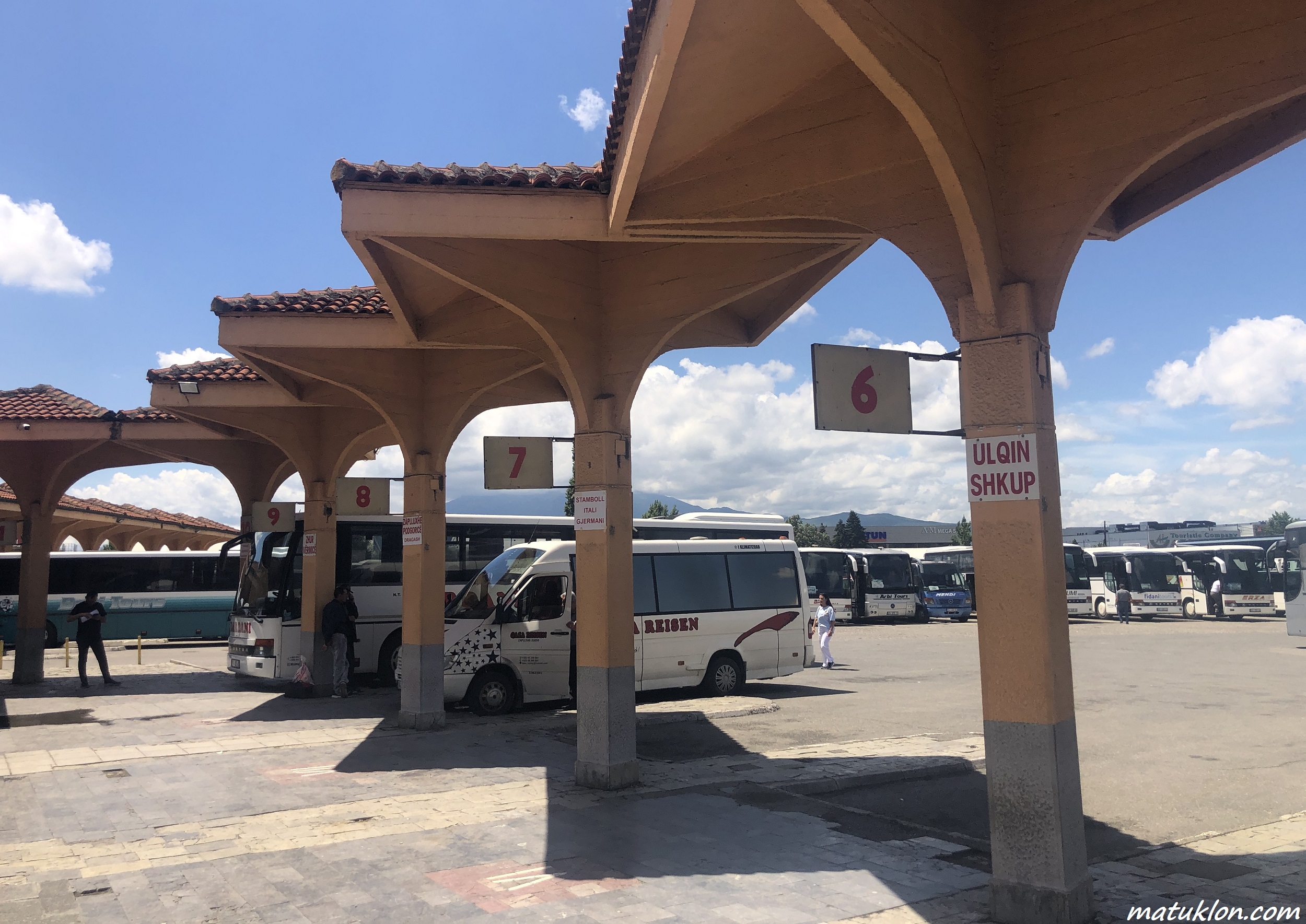From Prizren to Skopje by Bus – Tips and Advice
Travelling by bus in former Yugoslavian countries is the most efficient way of getting around. But it comes with its quirks and can be challenging for inexperienced travellers. When planning your itinerary, you might find that online resources in English are quite scarce. So, this is a quick post about my journey from Prizren, Kosovo to Skopje, the capital of (North) Macedonia.
Before the journey
There are only two connections a day from Prizren to Skopje, which is rather limited for Balkan standards. Departure times aren’t convenient either: 5:30 and 9 in the morning. And the 5:30 bus does not run on weekends.

Prizren bus station is quite centrally located compared to many other cities in the region. You can reach it in 15 minutes on foot from the city centre. There is a spacious waiting area inside the building, information desks, and a timetable. If you need to pick up some snacks, you’ll find many shops and cafés.
The station has over 20 platforms, but the one you need is number 6. It should have “Shkup” written on it, which is “Skopje” in Albanian.
Tickets
You can buy the tickets in advance, in an office inside the station, like the one in the photo below. Don’t let the staff overcharge you, though, the way they tried to round the price up for us. We held off, and bought the tickets on board.

It’s normal practice here to just get on the bus and purchase a ticket from the inspector who will walk through the bus shortly after departure. Just remember that on this route, you can only pay with cash. In June 2024, the tickets were 9 euros each, but I know that in spring 2022, they cost only 7. So it’s good to check beforehand.
The journey
There was maybe a dozen of people waiting for this bus, which is less than what I was expecting on a Saturday in high season. The bus arrived just minutes before the planned departure. It was a double decker operated by Vector, a popular company around here. We left Prizren at 9:02.

The bus has comfortable reclining seats with foldout tables. Above your head, you’ll have USB charging ports. There are going to be two stops in Kosovo: first in Suva Reka, and a longer, 15-minute stay in Ferizaj. Not many people joined as we went along, at least on the upper desk. Perhaps this route isn’t as popular as I thought, even though it links two prominent cities.
If the view is of any importance to you, I suggest that you sit on the right where the landscape is more interesting. This is not to say that it will be in any way outstanding, though. There are much more scenic routes in the Balkans.

Border crossing
Some 2.5 hours into the journey, we crossed the Kosovo–Macedonia border. Shortly before the crossing, the inspector circulated a list for all passengers to sign. He then handed it to the officer sitting in the booth at the checkpoint, without us having to get off the bus. Although convenient, this unfortunately meant we didn’t get a chance to ask for exit stamps from Kosovo in our passports. ☹️
We drove for a minute to the second checkpoint, where we got off and had our passports individually scanned for entry into Macedonia. No stamps are issued by default (at least in the UK and EU passports), but we did get them without any objections when we asked.

Arriving in Skopje
In Macedonia, we had one more stop to refuel, which took 15–20 minutes. The whole journey lasted 3.5 hours, and we arrived in Skopje in early afternoon.
Before it terminates at the main station in the east of Skopje, the bus makes a stop nearer the city centre and the Old Bazaar. Bear that in mind, so you can get off where it’s most convenient for you.

I hope this post will be useful in planning your trip. Happy travels! And if you’ve made this journey yourself, leave a comment if any information needs correcting or updating. Thanks! 🙂
